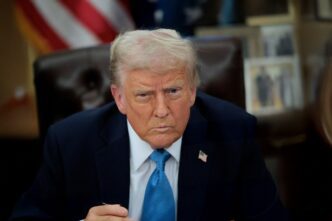Donald Trump has announced plans to impose tariffs on a wide range of foreign goods, marking a significant shift in U.S. economic policy. This decision could have profound effects across the nation if these tariffs are implemented as proposed. The president declared a 10 percent tariff on all foreign goods, with some countries facing even higher rates, and certain foreign-made cars will be subject to a 25 percent import tax. The implementation timeline for these tariffs remains unspecified.
This announcement is Trump’s most comprehensive tariff plan to date, made during a prominent White House ceremony, suggesting a more lasting policy. However, there is some skepticism given past instances where announced tariffs were later rescinded or delayed. Legally, the president has the authority to impose tariffs unilaterally, although legal challenges are anticipated.
For consumers, these tariffs are likely to lead to immediate price increases, as importers pass on the cost of taxes. Economists warn that this could trigger a recession, especially with anticipated retaliatory tariffs on U.S. exports by other countries.
Critics argue there are substantial concerns with previous U.S. free trade policies, particularly their impact on certain labor sectors. Yet, experts doubt the effectiveness of Trump’s strategy in significantly revitalizing U.S. manufacturing, predicting instead widespread economic hardship due to the new taxes.
The Economic Ripple Effect
- Consumer Costs: The introduction of tariffs will likely lead to higher consumer prices across various product categories, impacting household budgets.
- Potential Recession: Economic experts warn of a possible recession stemming from these tariffs, which could affect jobs and economic stability.
- International Trade Relations: Retaliatory tariffs from other countries could lead to strained trade relations and reduced U.S. export markets.
- Manufacturing Impact: While aimed at boosting U.S. manufacturing, the effectiveness of these tariffs in achieving large-scale revitalization is uncertain.
- Legal Disputes: The president’s use of tariff imposition power may face legal challenges, potentially affecting the timeline and permanence of these tariffs.







